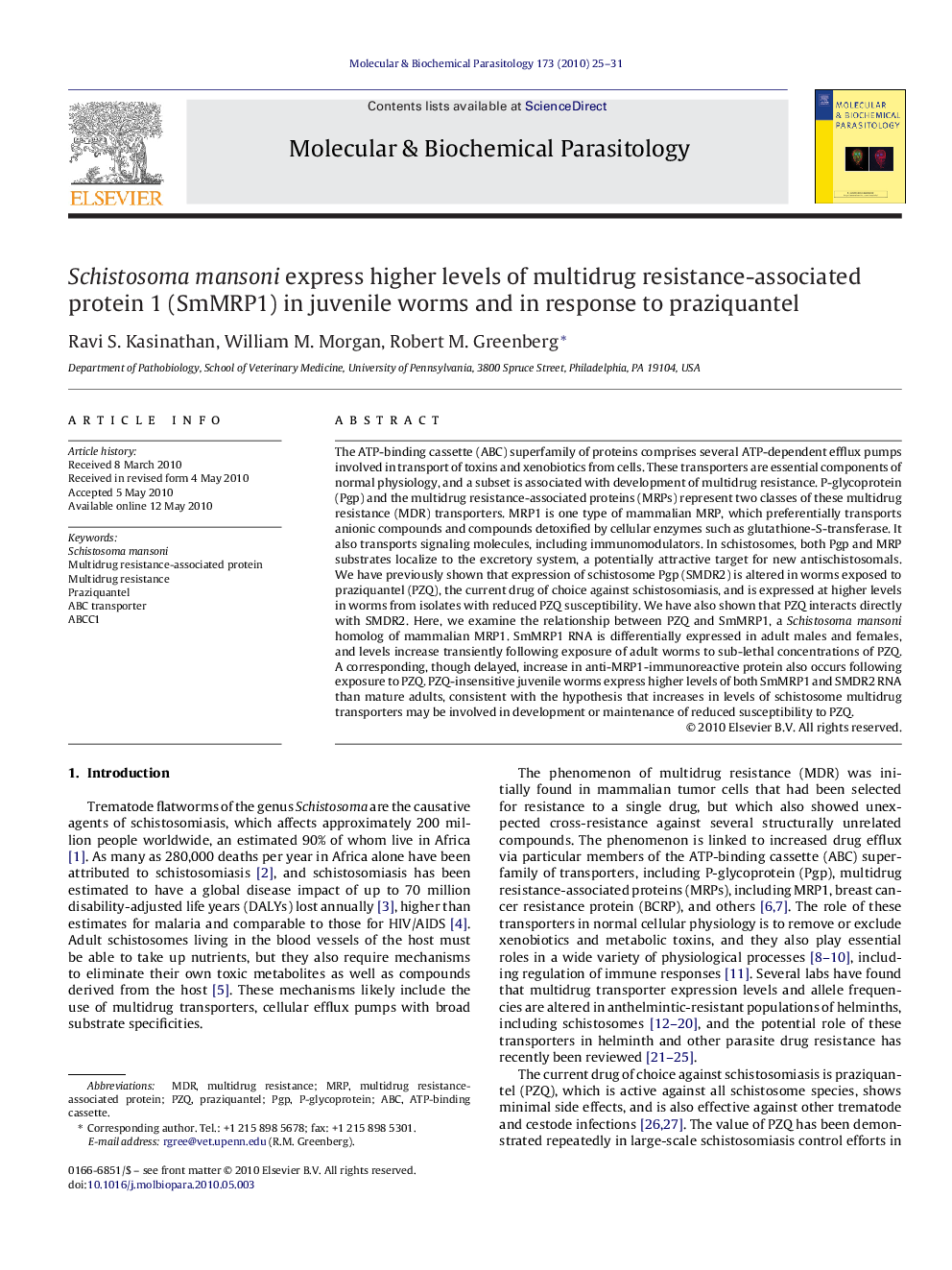| Article ID | Journal | Published Year | Pages | File Type |
|---|---|---|---|---|
| 2829930 | Molecular and Biochemical Parasitology | 2010 | 7 Pages |
The ATP-binding cassette (ABC) superfamily of proteins comprises several ATP-dependent efflux pumps involved in transport of toxins and xenobiotics from cells. These transporters are essential components of normal physiology, and a subset is associated with development of multidrug resistance. P-glycoprotein (Pgp) and the multidrug resistance-associated proteins (MRPs) represent two classes of these multidrug resistance (MDR) transporters. MRP1 is one type of mammalian MRP, which preferentially transports anionic compounds and compounds detoxified by cellular enzymes such as glutathione-S-transferase. It also transports signaling molecules, including immunomodulators. In schistosomes, both Pgp and MRP substrates localize to the excretory system, a potentially attractive target for new antischistosomals. We have previously shown that expression of schistosome Pgp (SMDR2) is altered in worms exposed to praziquantel (PZQ), the current drug of choice against schistosomiasis, and is expressed at higher levels in worms from isolates with reduced PZQ susceptibility. We have also shown that PZQ interacts directly with SMDR2. Here, we examine the relationship between PZQ and SmMRP1, a Schistosoma mansoni homolog of mammalian MRP1. SmMRP1 RNA is differentially expressed in adult males and females, and levels increase transiently following exposure of adult worms to sub-lethal concentrations of PZQ. A corresponding, though delayed, increase in anti-MRP1-immunoreactive protein also occurs following exposure to PZQ. PZQ-insensitive juvenile worms express higher levels of both SmMRP1 and SMDR2 RNA than mature adults, consistent with the hypothesis that increases in levels of schistosome multidrug transporters may be involved in development or maintenance of reduced susceptibility to PZQ.
Graphical abstractFigure optionsDownload full-size imageDownload high-quality image (114 K)Download as PowerPoint slide
